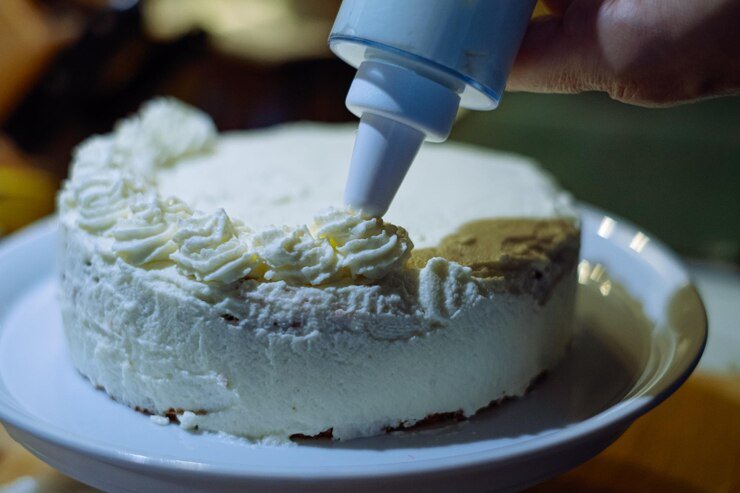If you’re looking to take your cakes to the next level, Cream Cheese Icing for Cake is a game-changer. Loved for its smooth texture and perfect balance of sweetness and tang, this icing has become a go-to choice for everything from classic red velvet to rich carrot cakes.
Unlike overly sweet frostings, cream cheese icing offers a slightly tangy flavor that complements the richness of many desserts without overpowering them. Whether you’re baking for a special occasion or just treating yourself, Cream Cheese Icing for Cake brings a homemade warmth and depth that’s hard to beat.
It’s simple to make, requiring just a few basic ingredients, yet it transforms even the simplest cakes into something memorable. Plus, it spreads and pipes beautifully, making it ideal for both rustic and elegant designs. If you’ve never tried making your own, now’s the perfect time—this icing is sure to become a favorite in your kitchen.
Ingredients
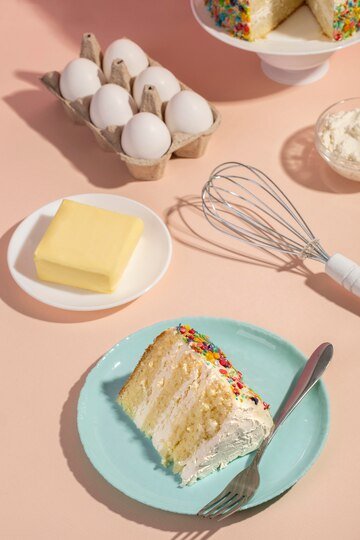
When it comes to making the perfect Cream Cheese Icing for Cake, the quality and combination of ingredients play a significant role in the flavor and texture of the final result. Let’s dive into the essential ingredients you’ll need to whip up this creamy, dreamy frosting.
Cream Cheese
The star of this icing is, of course, cream cheese. It provides the smooth, tangy base that makes this frosting so special. For the best texture and flavor, it’s important to use full-fat cream cheese, which will give your icing a richer taste. Avoid using reduced-fat or non-fat cream cheese, as they may result in a thinner, less flavorful frosting. Make sure the cream cheese is softened to room temperature before using it. This helps achieve a smoother consistency when mixing with the other ingredients.
Unsalted Butter
Unsalted butter adds richness and smoothness to the icing, balancing out the tanginess of the cream cheese. Using unsalted butter ensures you have full control over the salt content of your frosting. Like the cream cheese, it’s crucial to soften the butter to room temperature before mixing. Cold butter can lead to a lumpy and uneven texture, which we want to avoid. If you don’t have unsalted butter on hand, you can use salted butter, but just be mindful of the extra salt it will add to the icing.
Powdered Sugar
Powdered sugar (also known as confectioners’ sugar) is what gives Cream Cheese Icing for Cake its sweet, fluffy texture. It dissolves easily and helps the icing achieve the perfect consistency for spreading and piping. Start by adding a little at a time, as powdered sugar can quickly make the frosting too sweet or too thick.
You can adjust the amount depending on how sweet or thick you want your icing to be. If you’re looking for a thicker consistency, feel free to add more powdered sugar until you reach your desired texture.
Vanilla Extract
Vanilla extract adds a subtle, warm flavor that enhances the cream cheese and butter combination. It’s the ingredient that ties everything together and provides that familiar, comforting taste we all love in frosting. Use pure vanilla extract for the best flavor. Imitation vanilla can work as well, but it doesn’t deliver the same depth of taste.
A Pinch of Salt
Though it’s optional, a tiny pinch of salt helps to balance the sweetness and bring out the rich flavors of the cream cheese and butter. Salt is a great flavor enhancer, so just a small amount can make a big difference in the overall taste of your icing.
Tools and Equipment Needed
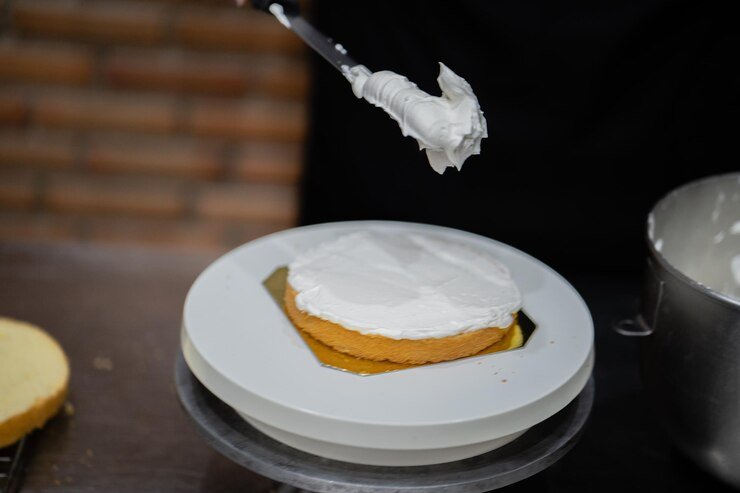
Making Cream Cheese Icing for Cake is a simple yet rewarding process, but having the right tools and equipment can make all the difference in achieving the perfect consistency and flavor. Below are the essential tools you’ll need to prepare this smooth, velvety frosting.
Mixing Bowl
A sturdy, medium-sized mixing bowl is essential for any frosting recipe. It provides enough space for all your ingredients and helps you mix everything together without any spills. A glass or stainless-steel bowl works best as they don’t absorb odors or react with acidic ingredients like cream cheese. Make sure the bowl is large enough to comfortably hold the cream cheese, butter, powdered sugar, and other ingredients.
Hand Mixer or Stand Mixer
While mixing the icing by hand is possible, using an electric hand mixer or stand mixer will save you time and ensure a smooth texture. These mixers allow you to blend the butter and cream cheese together quickly and efficiently, resulting in a lump-free icing. A hand mixer is perfect for smaller batches, but for larger amounts, a stand mixer with a paddle attachment will help incorporate all the ingredients evenly without overmixing.
Spatula or Whisk
After mixing your icing with the mixer, you’ll need a spatula to scrape down the sides of the bowl and ensure everything is well-incorporated. A silicone spatula works great for this as it gets all the icing from the edges of the bowl. If you’re making a smaller batch by hand, a whisk is a useful tool to beat the mixture together and add air to create a lighter texture.
Measuring Cups and Spoons
Accurate measurements are crucial for perfecting your Cream Cheese Icing for Cake. Measuring cups and spoons ensure that you get the right amounts of powdered sugar, butter, and other ingredients.
This will prevent your frosting from being too sweet or too thick and ensure the right balance of flavors. Be sure to use dry measuring cups for the powdered sugar and liquid measuring cups for any extracts or liquids.
Piping Bags and Tips (Optional)
If you plan to decorate your cake with intricate designs, piping bags and tips are helpful. After preparing your icing, transfer it into a piping bag with your desired tip to create beautiful rosettes, swirls, or even write on your cake. Piping bags allow for precise control over the icing, giving your cake a neat and professional look.
Offset Spatula
To spread the cream cheese icing evenly on your cake, an offset spatula is the perfect tool. Its flat, angled design lets you frost your cake smoothly without disturbing the layers beneath. It’s especially useful for creating a clean, even finish or for applying a thicker layer of frosting.
Step-by-Step Recipe
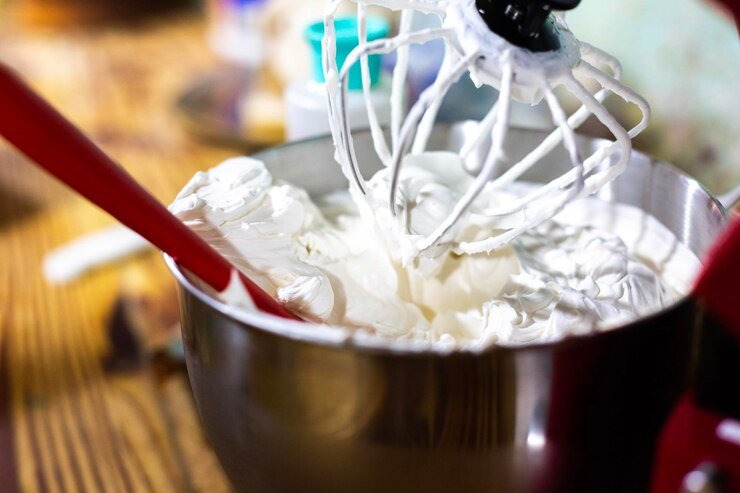
Making Cream Cheese Icing for Cake is a straightforward process, and once you master it, you’ll never go back to store-bought frostings. This recipe yields a smooth, creamy, and tangy icing that’s perfect for a variety of cakes. Here’s a simple, step-by-step guide to help you create this delicious icing.
Step 1: Prepare the Ingredients
The first step in making the perfect Cream Cheese Icing for Cake is to prepare all your ingredients. Ensure the cream cheese and butter are softened to room temperature before you begin. Cold ingredients can cause lumps in the frosting, making it harder to achieve a smooth consistency.
Leave both the cream cheese and butter out for about 30 minutes to soften, or use a microwave to gently warm them for a few seconds, but be careful not to melt them.
Step 2: Beat the Cream Cheese and Butter
Using a hand mixer or stand mixer, beat the softened cream cheese and butter together in your mixing bowl on medium speed until the mixture is light and fluffy. This should take about 2-3 minutes. The goal is to combine the cream cheese and butter fully and to make them smooth. Make sure to scrape down the sides of the bowl occasionally to ensure everything is well-incorporated.
At this point, you should have a creamy mixture with a smooth, even texture. The consistency should be soft and easily spreadable, but not runny.
Step 3: Add the Powdered Sugar Gradually
Now it’s time to add the powdered sugar. Do this gradually, about 1/2 cup at a time, mixing well after each addition. Powdered sugar can make a mess if added all at once, so it’s best to take your time. Beat on low speed until the powdered sugar is incorporated into the mixture, then increase the speed to medium-high to make sure it’s fully blended.
After all the powdered sugar is added, you should have a thick, creamy consistency that’s still soft and spreadable. If the icing seems too thick, you can add a small amount of milk or cream (1 teaspoon at a time) to achieve the desired consistency.
Step 4: Add the Vanilla Extract and Salt
Once the powdered sugar is fully mixed in, it’s time to add the vanilla extract. Add 1 teaspoon of pure vanilla extract to the icing and beat until fully combined. The vanilla adds a warm, aromatic flavor that complements the tanginess of the cream cheese.
If you’re using salt, now is the time to add a pinch. Salt helps balance the sweetness and enhances the flavor of the cream cheese. This step is optional but highly recommended, as it elevates the overall taste of the icing.
Step 5: Check the Consistency
At this point, it’s important to check the consistency of your Cream Cheese Icing for Cake. If you’re planning to spread the icing onto a cake, it should be thick but still soft enough to spread easily with a spatula. If you plan to pipe the icing, you might want it a bit thicker, so add a little more powdered sugar until it holds its shape.
If the icing feels too thick, you can add a teaspoon of milk or heavy cream at a time until it reaches your preferred consistency. If it’s too thin, add a little more powdered sugar, but be cautious not to make it too sweet.
Step 6: Frost Your Cake
Now that your Cream Cheese Icing for Cake is ready, it’s time to frost your cake! Start by placing your cake on a flat surface, like a cake stand or plate. Using an offset spatula or butter knife, spread a generous amount of icing on top of the cake. Start in the center and work your way out to the edges, making sure to cover the entire surface.
If you’re frosting multiple layers, be sure to add a layer of icing between each cake layer, as well as on top and around the sides. Smooth out the edges and top for a clean finish. For an even more polished look, you can use a piping bag to decorate the cake with swirls, rosettes, or other designs.
Step 7: Chill the Cake (Optional)
Once your cake is frosted, you can chill it in the refrigerator for 30 minutes to an hour. Chilling the cake helps the cream cheese icing set, making it easier to slice and preventing it from smudging. However, this step is optional—you can also serve the cake immediately if you prefer a softer, creamier texture.
Step 8: Serve and Enjoy!
Your Cream Cheese Icing for Cake is now ready to be enjoyed! This icing pairs beautifully with a variety of cakes, from classic carrot cake to rich red velvet or even a simple vanilla sponge. The tangy, creamy flavor is sure to be a hit with anyone who tastes it.
Tips for Perfect Cream Cheese Icing
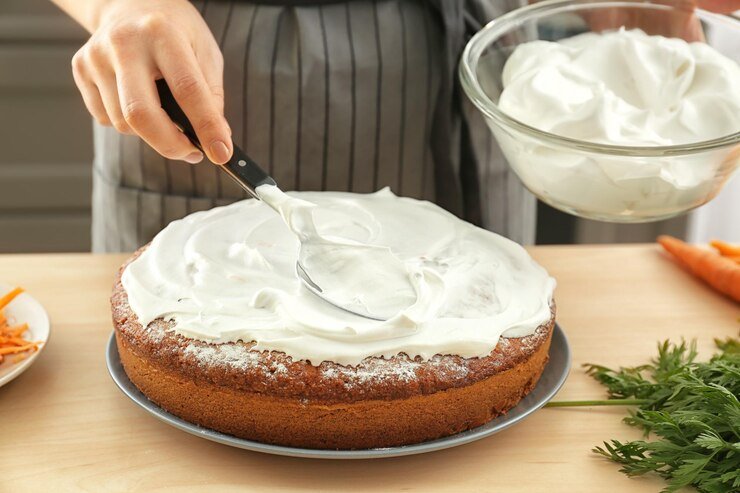
Creating the perfect Cream Cheese Icing for Cake might seem simple, but there are a few tips and tricks that can help you achieve a smooth, creamy, and beautifully textured frosting every time. Whether you’re new to frosting cakes or an experienced baker, these tips will elevate your cream cheese icing game!
Use Room Temperature Ingredients
One of the most important tips for making flawless cream cheese icing is to ensure that both your cream cheese and butter are at room temperature. Cold cream cheese or butter can cause lumps and prevent the icing from becoming smooth. To soften them quickly, leave them out at room temperature for about 30 minutes before starting. If you’re in a hurry, you can microwave the cream cheese and butter in short bursts of 10-15 seconds, but be careful not to melt them.
Beat the Cream Cheese and Butter Thoroughly
When mixing your cream cheese and butter, it’s important to beat them thoroughly until they are light, fluffy, and completely smooth. Use an electric mixer, whether hand or stand, to ensure the mixture is fully incorporated. This step is key to avoiding any lumps and achieving the creamy consistency that makes this icing so delicious. Be sure to scrape down the sides of the bowl occasionally to make sure everything is well-mixed.
Gradually Add the Powdered Sugar
Adding the powdered sugar slowly helps to prevent a mess and ensures that the sugar is well-incorporated into the mixture. Add powdered sugar about 1/2 cup at a time, mixing thoroughly after each addition. If you add all the powdered sugar at once, it can be harder to blend and result in a grainy texture. Gradual incorporation will give you a smooth, creamy frosting.
Adjust Consistency Based on Use
Depending on how you plan to use your Cream Cheese Icing for Cake, you may need to adjust the consistency. If you’re spreading it on a cake, it should be thick yet spreadable. However, if you’re piping the icing for decorative purposes, you may want a thicker consistency. In this case, add more powdered sugar. If it’s too thick, you can add a little milk or heavy cream to loosen it up.
Add Vanilla for Extra Flavor
While the cream cheese provides the tangy base for the icing, a touch of vanilla extract adds a layer of warmth and complexity to the flavor. Pure vanilla extract works best, but you can experiment with other flavors like almond or lemon extract for a unique twist. Just a teaspoon will be enough to enhance the overall taste without overpowering the cream cheese.
Don’t Overmix
When making Cream Cheese Icing for Cake, it’s essential to mix the ingredients just enough to incorporate them. Overmixing can cause the icing to become too soft or lose its structure. Mix until the icing is smooth, and stop when everything is fully combined.
Chill the Icing Before Using
If you have time, chilling the icing in the refrigerator for about 20-30 minutes before frosting your cake can help it firm up slightly, making it easier to work with. This is especially helpful if you’re working in a warm kitchen or planning to pipe intricate designs. Just remember to let it soften a little if it gets too stiff after chilling.
Variations and Flavor Twists
While classic Cream Cheese Icing for Cake is already a delicious frosting on its own, there are plenty of fun and easy variations you can try to add a unique twist to your cakes and cupcakes. Whether you’re looking to enhance the flavor, adjust the texture, or create something totally new, these variations will help you make your frosting even more exciting!
Add Citrus Zest for a Fresh Kick
One of the easiest ways to add a burst of fresh flavor to your cream cheese icing is by incorporating citrus zest. Orange, lemon, or lime zest adds a zesty, refreshing note that complements the tanginess of the cream cheese beautifully. Simply add about 1-2 teaspoons of fresh zest into the icing mixture, and mix it in well. Not only will this enhance the flavor, but it will also give the frosting a bright and vibrant twist that pairs perfectly with cakes like carrot cake or lemon pound cake.
Spice It Up with Cinnamon or Nutmeg
For a warm, cozy flavor, try adding ground cinnamon or nutmeg to your Cream Cheese Icing for Cake. Just a teaspoon of cinnamon or a pinch of nutmeg can elevate the icing, making it perfect for fall-inspired cakes such as spiced carrot cake or pumpkin cake. These spices pair wonderfully with the tangy cream cheese and buttery richness, creating a comforting frosting that’s full of depth.
Chocolate Cream Cheese Icing
For chocolate lovers, a simple way to transform your cream cheese icing is by adding cocoa powder or melted chocolate. To make Chocolate Cream Cheese Icing, mix 1/4 to 1/2 cup of unsweetened cocoa powder into the icing. Alternatively, you can melt about 3 oz (85g) of dark or semi-sweet chocolate and fold it into the mixture once it cools. This variation creates a rich, creamy chocolate frosting that pairs perfectly with red velvet cake, chocolate cake, or brownies.
Salted Caramel Twist
If you love the combination of sweet and salty, a salted caramel twist is a must-try. You can add about 1/4 cup of homemade or store-bought caramel sauce to your cream cheese icing, and then finish it with a pinch of flaky sea salt. The creamy, sweet, and salty flavor combination is perfect for cakes like chocolate cake, banana cake, or even a simple vanilla sponge. If you want to take it up a notch, drizzle extra caramel on top for a beautiful and decadent finish.
Fruit Flavors for a Refreshing Touch
For a fruity take on Cream Cheese Icing for Cake, you can add pureed fruits such as strawberries, raspberries, or blueberries. This is an excellent way to create a naturally flavored icing while keeping it light and fresh. Simply mash or puree the fruit and mix it into your frosting for a vibrant, fruity twist. You can also try adding fruit extracts or juices for a more concentrated flavor. This variation works especially well with cakes like strawberry shortcake, lemon cake, or even a moist vanilla cake.
Coffee-Flavored Cream Cheese Icing
For coffee lovers, a coffee-flavored cream cheese icing adds a deep, rich flavor that pairs beautifully with chocolate cakes, espresso-flavored desserts, or even a simple sponge cake. To achieve this flavor, dissolve 1-2 tablespoons of instant coffee granules or espresso powder in a teaspoon of hot water and mix it into your icing. This gives the frosting a subtle yet satisfying coffee flavor that adds complexity to your cake.
Try a Nutty Flavor
To add a nutty twist to your Cream Cheese Icing for Cake, consider incorporating ground nuts like pecans, almonds, or walnuts. You can fold in about 1/4 cup of finely chopped or ground nuts into the icing for added texture and flavor. These nuts complement cakes like carrot cake, banana cake, or spice cakes, giving them a unique crunch and nutty richness.
Best Cakes to Pair With Cream Cheese Icing
Cream Cheese Icing for Cake is a versatile frosting that pairs beautifully with a wide range of cakes. Its tangy yet sweet flavor, combined with its creamy texture, complements a variety of cake flavors. Whether you’re baking for a special occasion or just for yourself, here are some of the best cakes to pair with this indulgent frosting.
Carrot Cake
Carrot cake is arguably the most classic pairing with Cream Cheese Icing for Cake. The slightly spicy and moist texture of carrot cake, often filled with cinnamon, nutmeg, and shredded carrots, pairs perfectly with the smooth, tangy cream cheese frosting. The sweetness of the icing balances the spices in the cake, creating a flavor combination that’s both comforting and indulgent. This pairing is a favorite for many during the holidays, but it’s delicious year-round!
Red Velvet Cake
Another cake that shines with cream cheese icing is red velvet cake. The light cocoa flavor and soft, tender crumb of red velvet cake create the perfect base for the rich and tangy frosting. The creamy texture of the Cream Cheese Icing for Cake enhances the cake’s velvety texture, while the icing adds a layer of sweetness to balance the slight cocoa taste. This combination is a showstopper at any celebration, especially for birthdays or special events.
Banana Cake
Banana cake is a great choice for Cream Cheese Icing for Cake, as the natural sweetness and moist texture of the cake complement the rich, tangy frosting beautifully. The cream cheese icing adds a touch of richness that brings out the banana flavor while offering a balance of sweetness. This pairing is perfect for spring or summer gatherings and is a great way to use ripe bananas in a delicious cake.
Spice Cake
Spice cakes, with their warm blend of cinnamon, cloves, ginger, and other spices, are another fantastic option to pair with Cream Cheese Icing for Cake. The tangy frosting provides a refreshing contrast to the deep, aromatic flavors of the spice cake, making every bite a perfect balance of sweetness and spice. This pairing is especially popular during the fall and winter months, but it works wonderfully anytime you want a cozy, flavorful dessert.
Chocolate Cake
For chocolate lovers, Cream Cheese Icing for Cake is a great alternative to traditional chocolate frosting. The richness of the chocolate cake, whether it’s a dark chocolate, devil’s food, or milk chocolate version, pairs wonderfully with the creamy, tangy frosting. The slight tang of the cream cheese offsets the sweetness and density of the chocolate, creating a balanced flavor profile. This combination is perfect for anyone who enjoys a more complex frosting that adds depth to the chocolate cake.
Lemon Cake
If you prefer something light and refreshing, a lemon cake paired with Cream Cheese Icing for Cake is a wonderful choice. The bright, citrusy flavor of lemon cake works beautifully with the creamy texture and tangy taste of the cream cheese icing. This pairing is ideal for spring and summer events like weddings, showers, or outdoor picnics, where you want a dessert that’s both refreshing and indulgent at the same time.
Coconut Cake
Coconut cake is another cake that pairs wonderfully with Cream Cheese Icing for Cake. The soft, moist coconut cake, with its delicate flavor, complements the creamy, tangy icing perfectly. The sweetness of the cream cheese icing balances the coconut’s slightly nutty flavor, while the texture of the frosting enhances the soft crumb of the cake. Top it off with a little toasted coconut for extra flavor and texture, and you have a tropical-inspired treat that everyone will love.
Pumpkin Cake
For fall lovers, pumpkin cake with Cream Cheese Icing for Cake is a must-try combination. The moist, spiced pumpkin cake works beautifully with the rich, tangy icing, and the flavors blend seamlessly. The cream cheese icing adds a lovely sweetness to balance the warmth of the pumpkin and spices, making it a perfect dessert for autumn gatherings, Thanksgiving, or even Halloween parties.
Frequently Asked Questions
What Is Cream Cheese Icing for Cake?
Cream Cheese Icing for Cake is a rich, creamy frosting made primarily from cream cheese, butter, and powdered sugar. It is known for its smooth texture and slightly tangy flavor, which beautifully complements many types of cakes, especially those with rich or spicy flavors like carrot cake or red velvet.
The combination of cream cheese and butter creates a soft, spreadable consistency, while the powdered sugar helps sweeten and thicken the icing. This frosting can be customized with additional flavorings like vanilla extract, citrus zest, or even chocolate to enhance the flavor profile.
How Can I Make Cream Cheese Icing for Cake Less Sweet?
If you find your Cream Cheese Icing for Cake too sweet, there are several ways to balance the sweetness. One option is to reduce the amount of powdered sugar in the recipe slightly, but this may affect the texture. To counteract the sweetness without compromising the consistency, you can add a pinch of salt to the frosting.
Salt helps cut through the sweetness and enhances the tangy flavor of the cream cheese. You can also try incorporating a little extra cream cheese to intensify the tang and reduce the sweetness, but keep in mind that this may make the icing a bit softer.
How Can I Prevent My Cream Cheese Icing from Becoming Runny?
One common issue when making Cream Cheese Icing for Cake is that it can become too runny, especially in warm weather. To prevent this, it’s essential to start with cold cream cheese and butter, both softened to room temperature but not melted. Overbeating the mixture can also cause the frosting to become too loose.
If your icing is too runny, the best solution is to chill it in the fridge for about 30 minutes to firm it up. If necessary, you can also add more powdered sugar to thicken the frosting, but be cautious not to make it too sweet.
Can I Pipe Cream Cheese Icing for Cake?
Yes, you can pipe Cream Cheese Icing for Cake, though it may not hold as firm as other buttercream frostings. To make it pipeable, ensure that the icing is not too soft. If the frosting is too loose, refrigerate it for a while to firm it up.
Additionally, if you want to achieve precise, sharp piping designs, you can add a bit more powdered sugar to the mix to thicken it further. If you’re using a piping bag, make sure to use a large tip to ensure smooth, even distribution of the icing. For more delicate designs, a finer tip will work better once the icing has thickened.
How Long Can I Store Cream Cheese Icing for Cake?
You can store Cream Cheese Icing for Cake in an airtight container in the refrigerator for up to one week. Since it contains dairy products, it’s important to refrigerate it promptly to avoid spoilage. If you have leftover icing and plan to use it later, you can also freeze it for up to 3 months.
When you’re ready to use frozen icing, allow it to thaw in the fridge overnight and then re-whip it gently to restore its smooth consistency. This will help ensure your cream cheese icing stays fresh and delicious for future use.
Conclusion
Cream Cheese Icing for Cake is a versatile and delicious frosting that adds a perfect balance of tangy and sweet to any cake. Whether you’re making classic carrot cake, indulgent red velvet, or light lemon cake, this icing complements a variety of flavors beautifully.
By following simple steps and experimenting with flavor variations, you can create a frosting that suits your taste and elevates your cake to new heights. With its creamy texture and rich flavor, cream cheese icing is sure to become a favorite in your baking repertoire. So, next time you bake, don’t forget to try this irresistible frosting and enjoy the perfect finishing touch to your cake!

